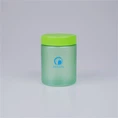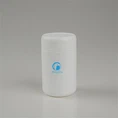Phenolic resin is a tricopolymer developed on the basis of modified polystyrene resin. One of the B representatives representing acrylonitrile, butadiene and styrene. With the comprehensive performance of three components, ABS resin can improve oil resistance and chemical corrosion resistance, so it has a certain surface hardness; B to make ABS rubber toughness, improve the impact toughness; So that ABS plastic has good fluidity, good thermoplastic molding processing performance.
In our country, ABS plastics are mainly used in the manufacture of instruments, household appliances, telephone sets and TV sets, and the ABS plastics used in electroplating to make metal lustre and are used in place of metal. Injection molding is the main molding method of ABS plastics, and its molding mainly depends on six conditions.
Drying of ABS plastics
ABS plastic is hygroscopic and sensitive to moisture, and sufficient drying and preheating before processing can not only eliminate the firework bubble band and silver wire caused by water vapor on the surface of the parts, but also contribute to the plasticization of plastics and reduce the color spots and mosses on the surface of the parts. The moisture of ABS raw materials should be controlled below 013%.
The drying conditions before injection molding are: the dry winter section is below 75 ~ 80 ° C, drying for 2 ~ 3h, the summer rain days are at 80 ~ 90 ° C, drying for 4 ~ 8h, such as the parts to achieve particularly good luster or the parts themselves are complex, the drying time is longer, up to 8 ~ 16h. Fog spots on the surface of parts caused by the presence of trace water vapor are often ignored.
Injection temperature
The relationship between temperature and melt viscosity of ABS plastics is different from that of other amorphous plastics. When the temperature of the melting process rises, the melting is actually reduced very little, but once the plasticization temperature is reached (the temperature range suitable for processing, such as 220 ~ 250 ° C), if it continues to heat up blindly, it will lead to the thermal degradation of ABS which is not too high in heat resistance, but the melting viscosity will increase, the injection molding will be more difficult, and the mechanical properties of the parts will also decline. Therefore, although the injection temperature of ABS is higher than that of polystyrene and other plastics, it cannot have a looser temperature range like the latter.
The greater the temperature change, it will bring defects such as melting joints, poor luster, flash, sticky mold, and discoloration.
Injection pressure
The viscosity of ABS molten parts is higher than that of polystyrene or modified polystyrene, so a higher injection pressure is used during injection. Of course, not all ABS parts should be applied high pressure, and lower injection pressure can be used for small, simple and thick parts. In the process of injection, the pressure in the cavity at the moment of gate closure often determines the surface quality of the parts and the degree of silver filamentary defects. The pressure is too small, the plastic shrinkage is large, the chance of discontact with the cavity surface is large, and the surface of the workpiece is atomized. The pressure is too large, the friction between the plastic and the surface of the cavity is strong, and it is easy to cause sticky mold.
Injection rate
ABS material with medium injection speed has better effect. When the injection speed is too fast, the plastic is easy to burn or decompose and precipitate gasification, resulting in defects such as melting joints, poor luster and plastic redness near the gate on the parts. However, in the production of thin-walled and complex parts, it is necessary to ensure that there is a high enough injection speed, otherwise it is difficult to fill.
Mold temperature
The forming temperature of ABS is relatively high, and the mold temperature is also relatively high. Generally, the adjustment mold temperature is 75 ~ 85℃, when the production of parts with a large projection area, the fixed mold temperature is required to be 70 ~ 80 ℃, and the dynamic mold temperature is required to be 50 ~ 60 ℃. When injecting large, complex, thin-walled parts, special heating of the mold should be considered. In order to shorten the production cycle and maintain the relative stability of the mold temperature, after the parts are taken out, cold water bath, hot water bath or other mechanical styling methods can be used to compensate for the original cold fixed type time in the cavity.
Volume control
When the general injection molding machine injects ABS plastic, the amount of each injection is only 75% of the standard injection amount. In order to improve the quality and size stability of the parts, the surface luster and color uniformity, the injection amount is required to be 50% of the calibrated injection amount.
















